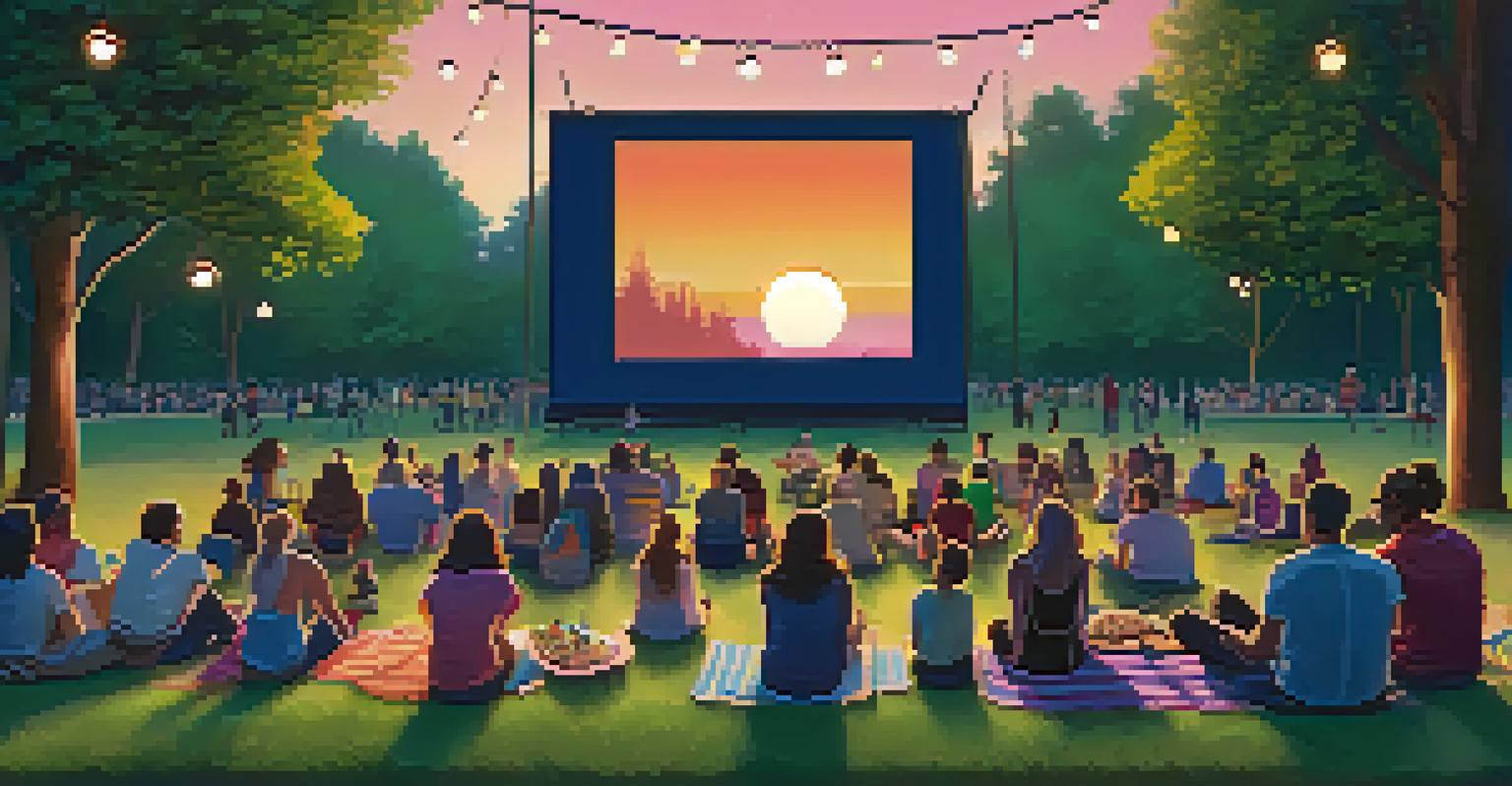The Impact of Audience Expectations on Film Adaptations

Understanding Audience Expectations in Film Adaptations
Audience expectations play a crucial role in shaping film adaptations. When a beloved book, comic, or video game gets adapted, fans often arrive with specific visions of what they hope to see. This anticipation can create a fine line for filmmakers to walk, as they strive to meet these expectations while remaining true to their artistic vision.
Adaptation is not about fidelity to the original, but about finding the essence of the story and translating it into a new medium.
For instance, consider the adaptation of a classic novel like 'The Great Gatsby.' Many viewers come with preconceived ideas based on their reading experience or previous adaptations. This desire for fidelity can lead to disappointment if the film diverges from their expectations, highlighting the delicate balance filmmakers must strike.
Ultimately, understanding these expectations is essential for filmmakers. They must recognize that while some viewers seek a faithful retelling, others may welcome a fresh interpretation. This awareness can guide creative decisions and help filmmakers navigate the complex landscape of audience sentiment.
The Role of Nostalgia in Shaping Expectations
Nostalgia significantly influences audience expectations, especially for adaptations of beloved franchises. When films are based on childhood favorites, viewers often bring emotional connections that can heighten their desire for authenticity. This sense of nostalgia can amplify their reactions, making it crucial for filmmakers to acknowledge these feelings.

Take the 'Harry Potter' series as an example. Many fans grew up with the books and were eager to see their favorite characters and moments come to life on screen. The nostalgia tied to the original material created a heightened sense of scrutiny, where even minor changes could evoke strong reactions from dedicated fans.
Audience Expectations Shape Adaptations
Filmmakers must balance meeting audience expectations while staying true to their artistic vision in adaptations.
Filmmakers can capitalize on this nostalgia by incorporating familiar elements from the source material. However, they must also balance this with innovative storytelling to keep the narrative fresh. Striking this balance is key to satisfying both nostalgic fans and new audiences alike.
Market Trends and Audience Expectations
In today's film landscape, market trends often dictate audience expectations. With the rise of franchises and interconnected universes, viewers have come to expect certain conventions and styles. This shift can create a pressure on filmmakers to conform to these trends, sometimes at the expense of originality.
The best adaptations are those that create a new experience, while still honoring the heart of the original material.
For example, superhero films have established a specific formula that audiences now anticipate, including epic battles and post-credit scenes. While this can enhance viewer satisfaction for those who enjoy the genre, it can also lead to a sense of fatigue when every new release feels similar.
Filmmakers can either embrace these trends or challenge them, depending on their goals. Those who choose to innovate might attract attention but could also risk alienating traditional fans. Understanding market expectations is essential for making these strategic choices.
Fan Culture and Its Influence on Adaptations
The rise of fan culture has transformed the way audiences engage with adaptations. Online communities allow fans to share their opinions, theories, and even critiques before a film is released. This collective voice can significantly impact how filmmakers approach their adaptations, as they often find themselves responding to fan feedback.
For instance, the backlash over a character's portrayal in a popular adaptation can prompt filmmakers to reconsider their choices in future installments. This dynamic creates a unique relationship between creators and audiences, where fan expectations can shape the direction of a franchise.
Nostalgia Influences Viewer Reactions
Emotional connections to original material can heighten scrutiny and expectations for adaptations, making nostalgia a powerful factor.
While this interaction can be beneficial, it also presents challenges. Filmmakers must navigate the fine line between listening to fan feedback and maintaining their creative vision. Balancing these elements can lead to adaptations that resonate well with audiences while still reflecting the filmmakers' unique style.
Diverse Audiences and Varied Expectations
As films become more accessible globally, filmmakers must consider the diverse expectations of their audiences. Different cultures may interpret characters and storylines in unique ways, which can influence how adaptations are received. This diversity can create both challenges and opportunities for filmmakers seeking to please a broad spectrum of viewers.
For example, an adaptation of a story with strong cultural ties may resonate deeply in its country of origin while facing criticism elsewhere. Filmmakers can benefit from understanding these cultural nuances and incorporating them into their storytelling, making the adaptation more relatable to a diverse audience.
By acknowledging the varied expectations that come with an international audience, filmmakers can create adaptations that are more inclusive. This approach not only enhances viewer satisfaction but also opens up new markets and opportunities for storytelling.
The Balance Between Fidelity and Creativity
One of the core dilemmas in film adaptations is the balance between fidelity to the source material and creative interpretation. While fans may have specific expectations rooted in the original work, filmmakers often feel the need to infuse their unique vision into the project. This tension can lead to debates over what makes an adaptation successful.
Take the adaptation of 'The Lord of the Rings,' for instance. Peter Jackson made bold choices that deviated from Tolkien’s text, yet many fans praised the films for their epic storytelling and visual grandeur. This illustrates that while fidelity is important, innovation can lead to memorable cinematic experiences.
Diversity Requires Cultural Sensitivity
As global audiences grow, filmmakers need to consider varied cultural interpretations to create inclusive and relatable adaptations.
Finding this equilibrium requires filmmakers to understand their audience deeply. By recognizing which elements of the source material are most cherished, they can make informed decisions that respect the original while still allowing for creative expression.
Audience Expectations and Box Office Success
Audience expectations can significantly impact a film's box office success. When a film adaptation aligns with what viewers anticipate, it can lead to strong opening weekends and positive word-of-mouth. Conversely, if expectations are not met, it can result in disappointing ticket sales and negative reviews.
For example, adaptations like 'The Hunger Games' and 'The Fault in Our Stars' not only met but exceeded audience expectations, resulting in substantial box office returns. These films effectively captured the essence of their source materials while appealing to broader audiences, which enhanced their commercial success.

Ultimately, understanding audience expectations is vital for filmmakers aiming for financial viability. By catering to these anticipations while maintaining creative integrity, adaptations can achieve both critical acclaim and box office triumph.